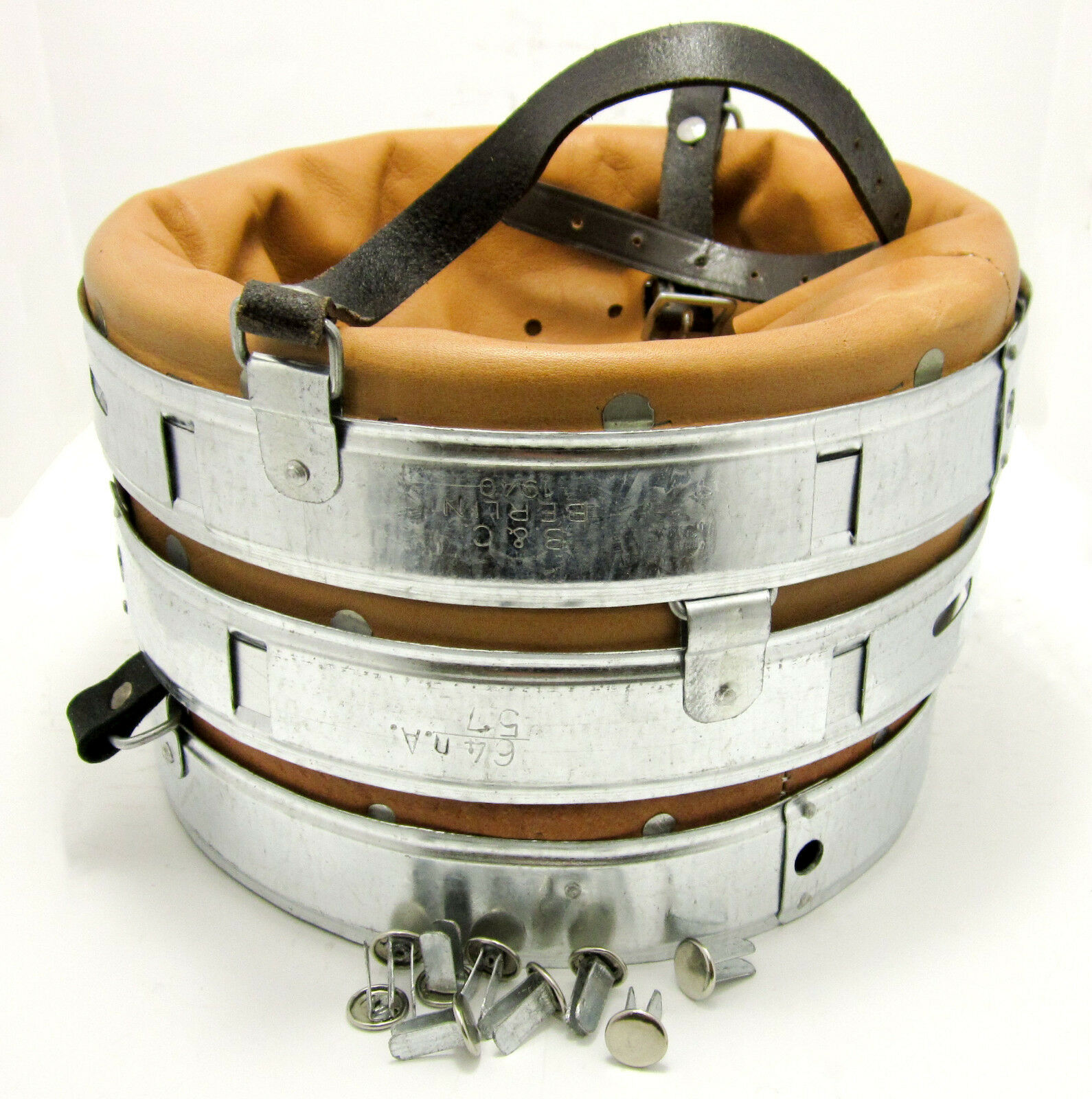-40%
WWII GERMAN M42 CAMOFLAGED ARMY HELMET w/LINER & CHINSTRAP
$ 1399.2
- Description
- Size Guide
Description
This is an extremely fine World War II Model 1942 Camouflaged Army Helmet that is in very good field used condition. The camouflage colors are dark brown, tan, and green over a rough saw dust, textured finish. Except for a worn area at the top of the helmet, the paint remains completely intact. The liner rivets are factory tight and have never been removed. They are painted over with matching camouflage paint. The liner is complete but dark from age and field use. There is very little rim wear to the leather. A piece of the original dome string is still in place in the holes in the top of the fingers. The long chinstrap is in place but without the securing rivet and the short strap with the buckle is missing. The rear flange is marked “ckl 64” for manufacture by Eisenhüttenwerke in Thale and the shell size, 64 centimeters. Below this is the lot number, “4767”. Just a beautiful example.The Eisenhüttenwerke in Thale was the largest of all helmet production facilities during World War II. The Thale plant played a principle role in the preliminary and ongoing design of the new M1935 steel helmet that would eventually be worn by all combat troops of the German Armed Forces. The Thale plant began producing steel helmets for the German military during World War I. In keeping with tradition, the Procurement Office of the Army and Navy awarded the Thale plant with one of two initial contracts to produce steel helmets. Thale engineers worked on the principle upgrades that modified the M1935 through various stages resulting in what is known today as the M1940 and M1942 models.
















